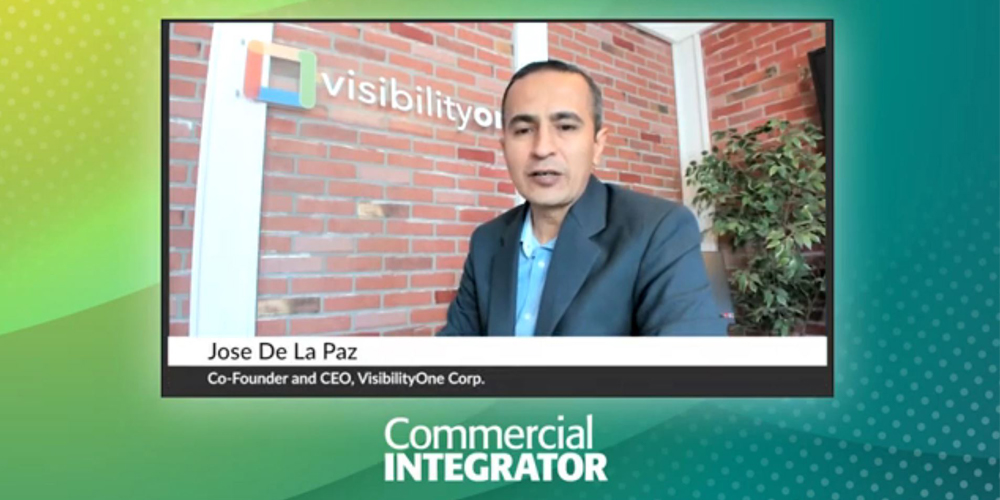CI: With the wide adoption of videoconferencing and a large percentage of employees working outside a corporate office, describe how your monitoring solution is addressing the hybrid-workforce model.
Jose De La Paz: Prior to the pandemic, there was a lot of the emphasis on videoconferencing rooms—being able to monitor the quality of service that you experience in a room-based setting. We have developed a solution that improves quality of service, that includes self-healing, failover, and path detection. Those key components really create that high availability around a conference room.
At the start of the pandemic, we anticipated the world was going to change. And that change was going to introduce a bigger challenge for IT organizations and service providers: They had to deliver that same quality of experience to remote workers. Now, employees were bringing their own devices back home. They were expecting the same experience they were having in a conference-room setting. We anticipated there were going to be huge challenges around extending that same support model to the remote workforce.
Early in the pandemic, we focused on creating a client that helped us monitor these services in the same typical way—in a single dashboard, in a single view—that we were monitoring the conference-room settings. But we wanted to extend that to the desktop…to the home worker. So, we developed and deployed a solution focused on the hybrid workforce. We focused on extending that model to the hybrid worker. So, that means we could monitor that path detection, whether it was Microsoft Teams or Zoom being used on the desktop. We could monitor the devices and components, have that remote-heal capability, and detect when there’s a problem proactively. It gives that same visibility to the IT team or the support organization to resolve issues quickly.
About 76% of employees are working from home today. There’s a big gap among the tools in the market, and our solution addresses that gap specifically. And that gap is generating for the typical enterprise approximately 1,000 new trouble tickets just around videoconferencing. So, our solution and the way we’re addressing the hybrid workforce is really through that agent we created, which sits on a desktop, providing real-time monitoring for Microsoft Teams and Zoom.
CI: What new services are being offered in your solution?
De La Paz: Our solution covers a long list of services, but I’ll highlight the top ones that IT organizations or service providers are adopting. I mentioned self-healing—the ability to have devices automatically heal themselves or repair themselves, giving you high availability. I mentioned path detection. We monitor everything from that desktop or that room all the way to the service-provider gateway. So, every hop it’s taking, we’re monitoring the jitter, packet loss and latency. And most organizations are used to the dashboard provided by a manufacturer, but that doesn’t give you the entire view…the entire path that a call’s taking.
We’ve also extended our portfolio to include more in-depth IoT monitoring. So, we can now expand on the ports and protocols that are being monitored from an AV perspective. We’re able to provide integrators remote access to a lot of these devices—from anywhere, at any time—and bring in a lot of these rogue devices under a single space…a single view…a single dashboard to be able to action that.
Going further, looking at our document center in our solution, we’re now enabling QR coding. So, you can share externally, through a QR code, access to those documents, designs, and images for anyone who needs to service that room. So, our solution brings path detection, device monitoring, IoT, QR coding and document center into a single view.
CI: What’s your go-to-market approach?
De La Paz: Our go-to-market approach has always been partner-first. We work closely with integrators or service providers to enable them to offer the solution to their end customers. We provide a management console that is multi-tenant. We let the integrator and service provider manage their own POCs. They can start the trial when they need to and end it when the trial is no longer needed. And the service provider or integrator only pays for the subscription services. While it’s on a trial, there’s no fee and there are no service charges; they only pay for subscriptions. And they control when a service goes from trial to subscription. So, it’s really driven by the partner.
We also offer a fully branded and white-labeled platform. That means, for all the agents I mentioned that we created for the desktop, for Zoom rooms or for Microsoft Teams rooms, we recompile those with our service provider’s branding in mind. So, it’s a solution that constantly keeps that partner or integrator’s branding in the customer’s eye.

















